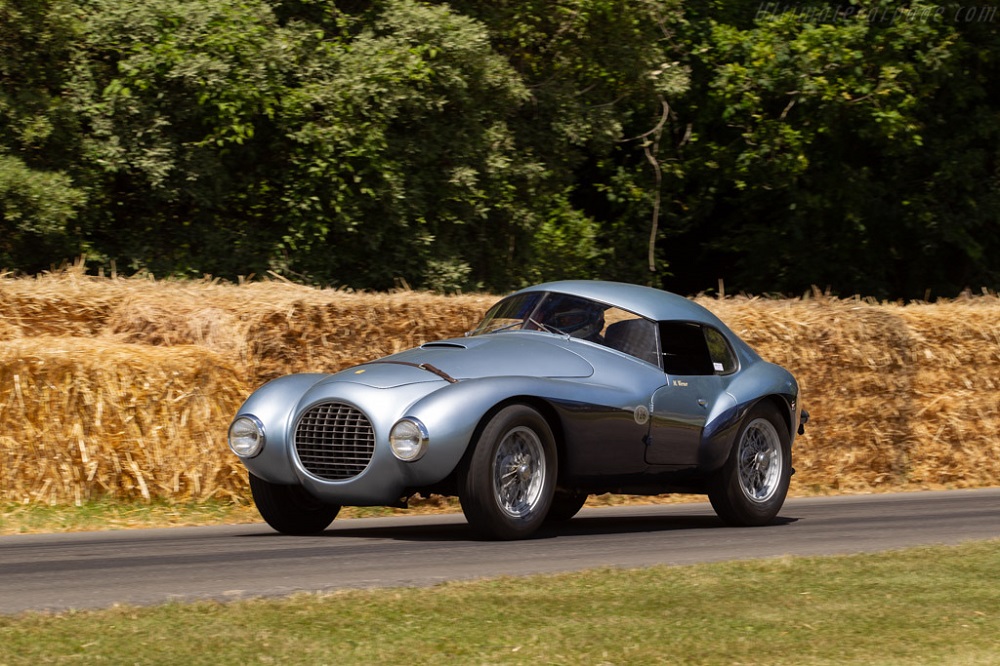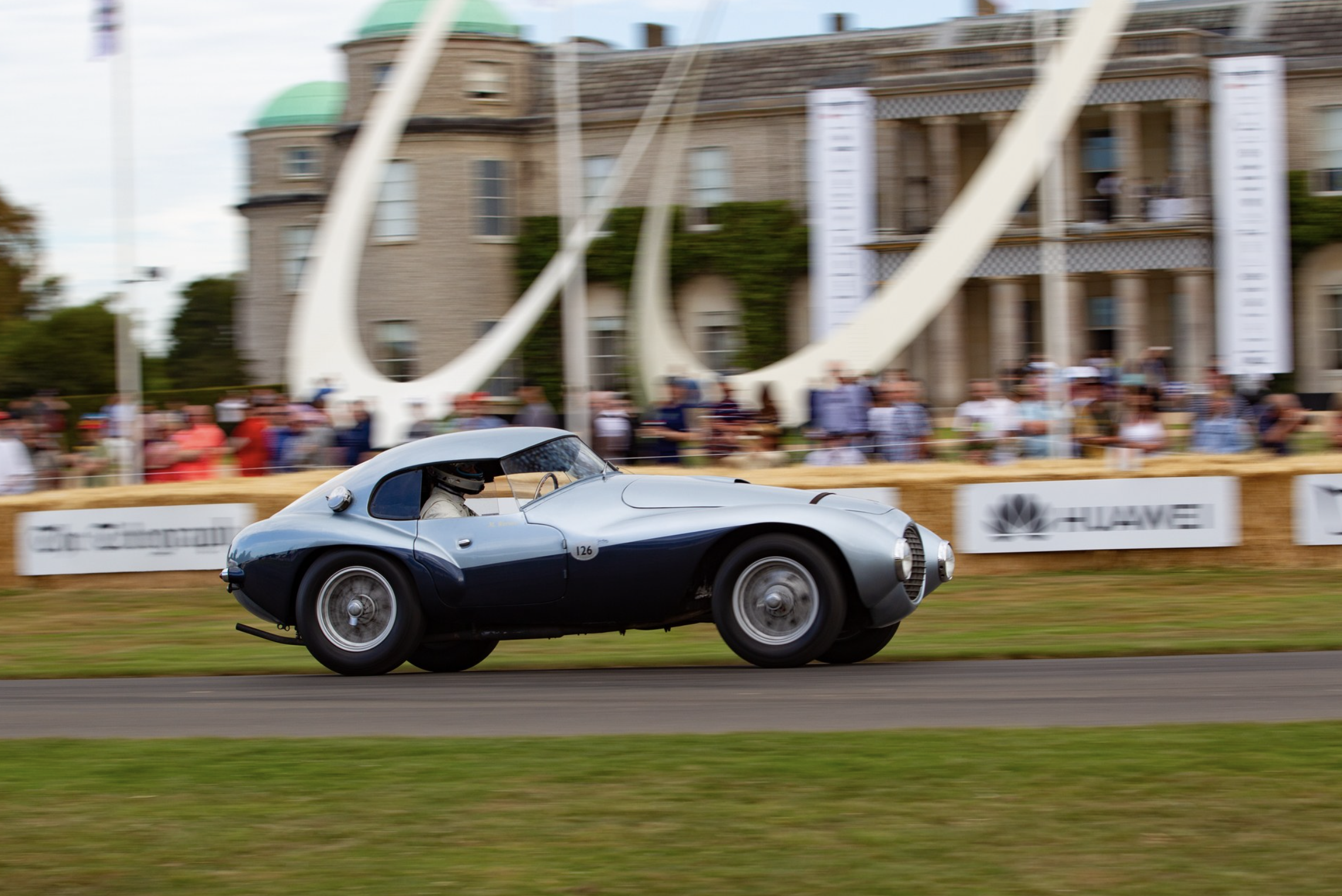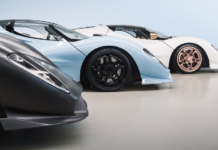Our friends of KW have just updated their story about the incredible Ferrari Uovo. The car competed three times at the Mille Miglia from 1950 to 1952. It was leading the race in 1951 against all works entries but was retired due to a misjudged differential issue. Enjoy a great feature about a real easter egg!

Few customers had such a crucial role in the success of Ferrari during the company’s formative years than the four Marzotto brothers. Heirs to a vast textile fortune, they were the quintessential gentleman racers. Giannino Marzotto, for example, lined up for the 1950 Mille Miglia wearing a double breasted brown suit, despite being a young a man of just 22 years old.
It was certainly not all show as he would go on to pilot his brand new Ferrari to the outright victory. So the brothers not only bought a considerable number of new Ferraris, they also showed why others should follow suit.
To some extend, Giannino Marzotto likened himself to Enzo Ferrari and he was keen to follow in his footsteps with the family’s Scuderia Marzotto. Underlining his big plans, he ordered a pair of the latest 212 Export Ferraris as rolling chassis ahead of the 1951 season. He figured that fitting bespoke bodies would give the team an edge over other Ferrari customers, who ran the ‘standard’ Touring design. He found a willing partners in the small Carrozzeria Fontana and their designer Franco Reggiani, who would soon after become a very well known sculptor.
For one of the two cars, Marzotto opted for a minimalistic and above all lightweight cycle-fender Spider design but for the second, he decided a more elaborate Berlinetta body would be required. He had won the Mille Miglia in 1950 with a Touring Berlinetta bodied Ferrari, and he clearly recognised the advantage of the more slippery coupe design in high speed races. Reggiani was perfectly suited to the task as he had a background in the aeronautical industry. Despite being barely 25-years old at the time, he already had a decade’s worth of experience.
Appropriately, the design he had quite literally sculpted for Marzotto’s coupe was dubbed the ‘Jet’. It featured a very low nose, which in its originally guise did not offer enough room to house the radiator and other mechanical. Even in its modified form, the nose was low, while the rest of the body was also as low and as narrow as possible to reduce the frontal area. As a result the front and rear fenders are very pronounced as they are wider than the cockpit area. This consisted of a tiny perspex windshield and a very low, swooping roof that ran all the way to the curvaceous tail of the car. To save weight, the body panels were made from the exotic alloy Peraluman and instead of A-pillars there were two braided steel cables that held the roof in place.
The shape of the coupe was not only dictated by Reggiani’s background as an aeronautical engineer, it also benefited from Giannino Marzotto’s racing experience. He felt that traction was key and he requested that as much weight as possible should be concentrated around the rear axle. Accordingly, the driving position was changed with the seat moved back. Further changes included the relocation of the massive fuel tank behind the rear axle. The spare wheel was also mounted in the very tail of the car.
Unfortunately, Ferrari were late in delivering the two new cars, which looked set to delay the build of particularly the complicated Jet Coupe. Fortunately, the Marzottos had an existing Ferrari chassis laying around that would form a suitable substitute to help keep the program on schedule. The frame in question came from one of a pair of 166 MM Touring Barchettas ordered by the Marzottos ahead of the 1950 season. It had been crashed heavily in the Mille Miglia, requiring comprehensive repair work.

As soon as the two 212 Exports arrived at the Fontana shop, one was fitted with cycle-fender body, while the sister car had its engine removed. Although still based on the original 1.5-litre V12 of the first Ferraris, this engine was now further enlarged to displace 2.6 litres. It produced just shy of 160 bhp with a single Weber carburettor and close to 190 bhp when fitted with the triple carburettor setup it received a little while later. As it was so similar to the earlier engines, there were no issues mounting it in the existing 166 MM chassis. Amazingly, the little Ferrari Coupe tipped the scales at just 800 kg.
Once the two Fontana bodied machines were ready, the Marzottos brought them to Maranello. Hoping for a stamp of approval, they clearly did not know Enzo Ferrari as well as they thought they did. It was hardly a surprise that Enzo was none too pleased by a couple of spoiled young brats trying to build a better Ferrari than he could. Trying to stay polite, as these were some of his best customers, Enzo could not resist to point out that he felt the bodywork was not rigid enough to endure the strains of serious racing.
The two cars debuted in April of 1951 at the Giro di Sicilia. Vittorio Marzotto drove the Spider to victory, while Giannino was forced to retire the Coupe due to a clutch failure. The two cars had caused quite a stir, and the Coupe was quickly nicknamed the ‘Uovo’ or egg for its unusual shape. Having taken an early lead over all the factory Ferraris, Giannino sadly had to retire from the race with a flat tyre. Later in the year he had more luck, winning the Coppa della Toscana outright. Vittorio was behind the wheel when the Uovo finished second overall in the Circuito Internacional do Porto.
With the brothers stepping up to larger engined cars for the 1952 season, the Uovo was fielded by Scuderia Marzotto for other gentleman drivers that year. It had also been fitted with a Formula 2 derived V12 engine as the 212 Export engine used in 1951 was fitted back into the chassis it had come from. The best result in 1952 was a win in the Trento-Bondone with Giulio Cabianca behind the wheel. Fitted with a 212 Inter engine, it was then shipped to North America and sold on. Its final contemporary outings came in the hands of Ignacio Lozano, who raced the car on the American west coast from 1954 through to 1956.
Although restored once during the 1980s, the unique ‘Uovo’ has survived a lot longer than Enzo Ferrari had thought it would. It remains as one of the most unusual Ferraris of the era and an exquisite act of defiance that came achingly close to win the biggest race in Italy.
Find out more on ultimatecarpage.com
Report by Wouter Melissen for ultimatecarpage.com










